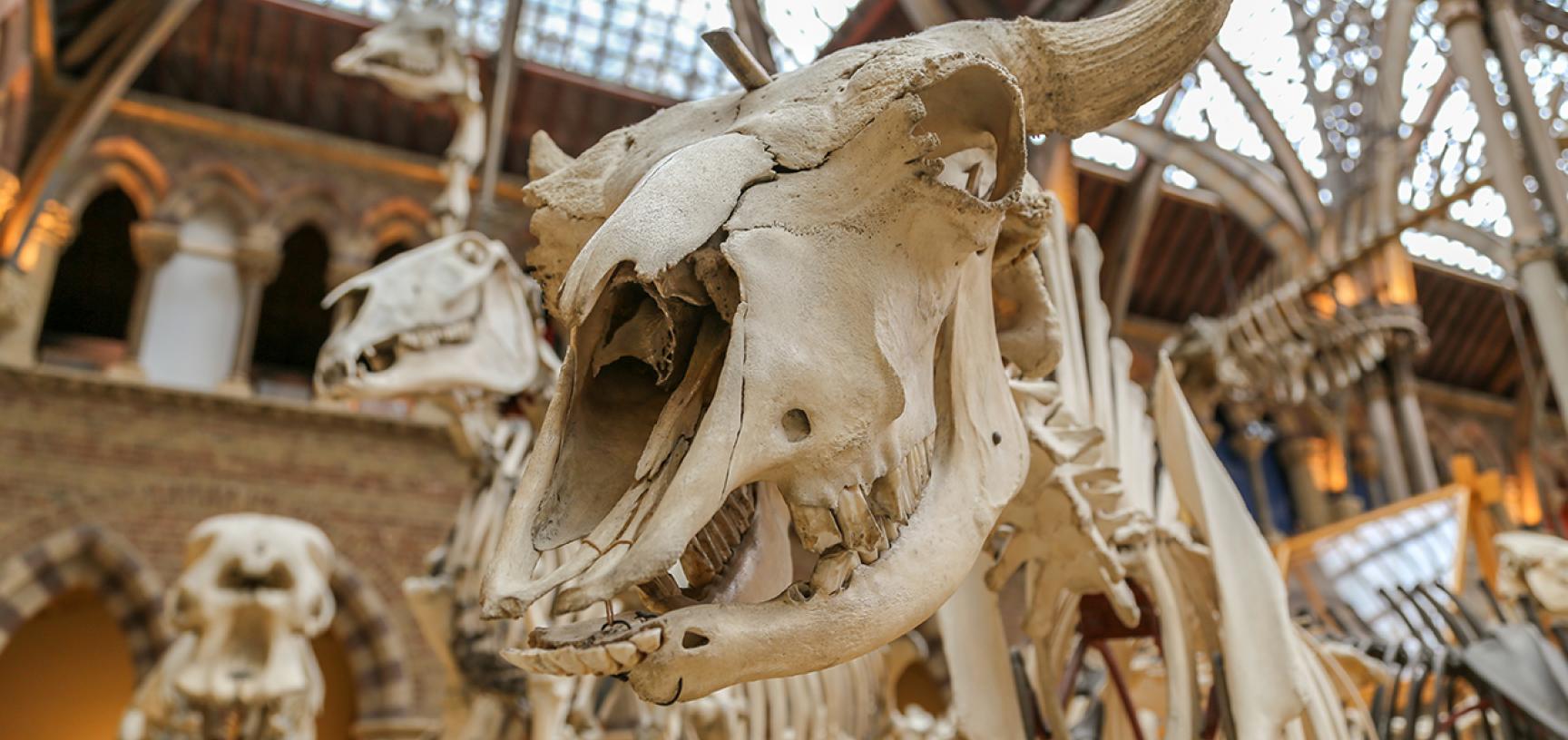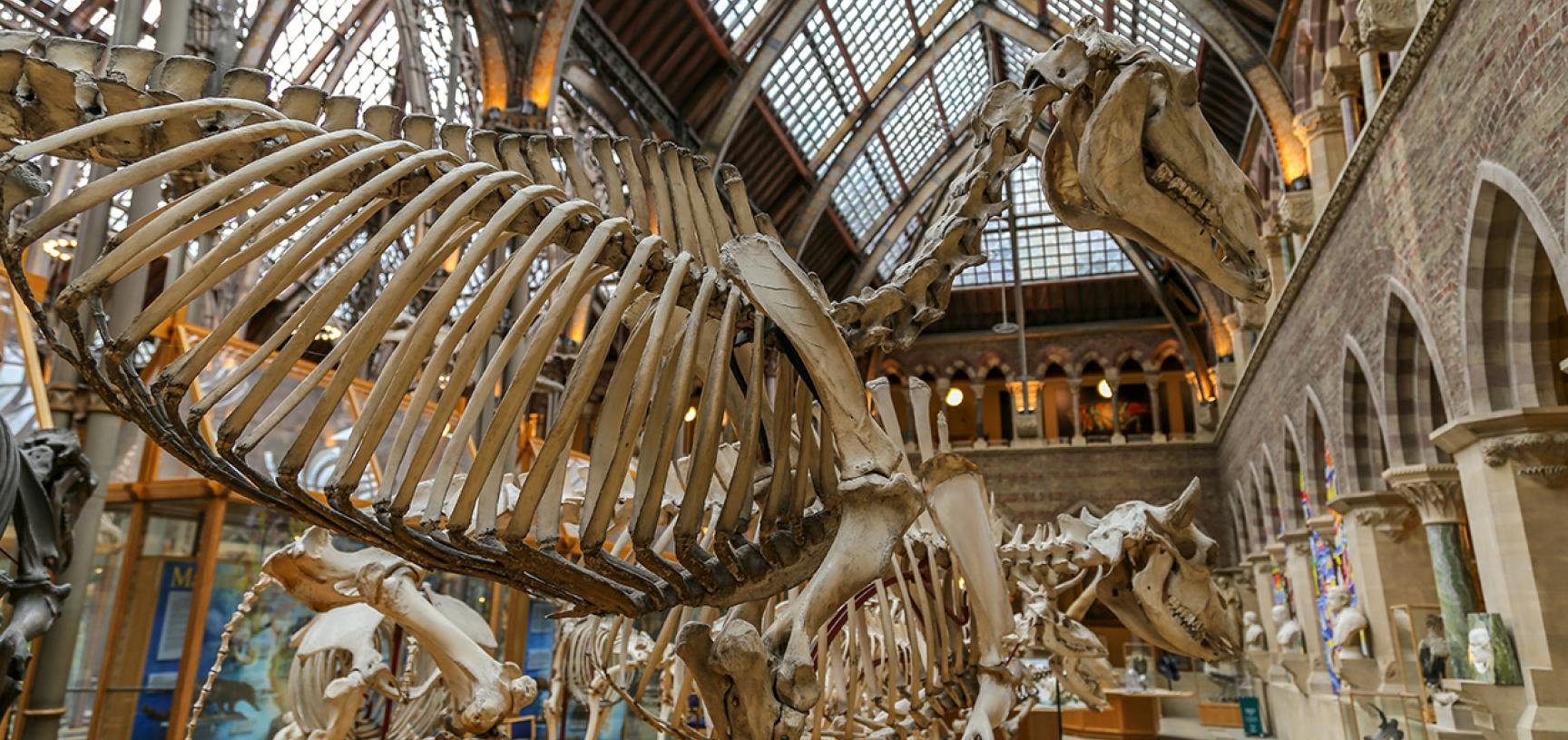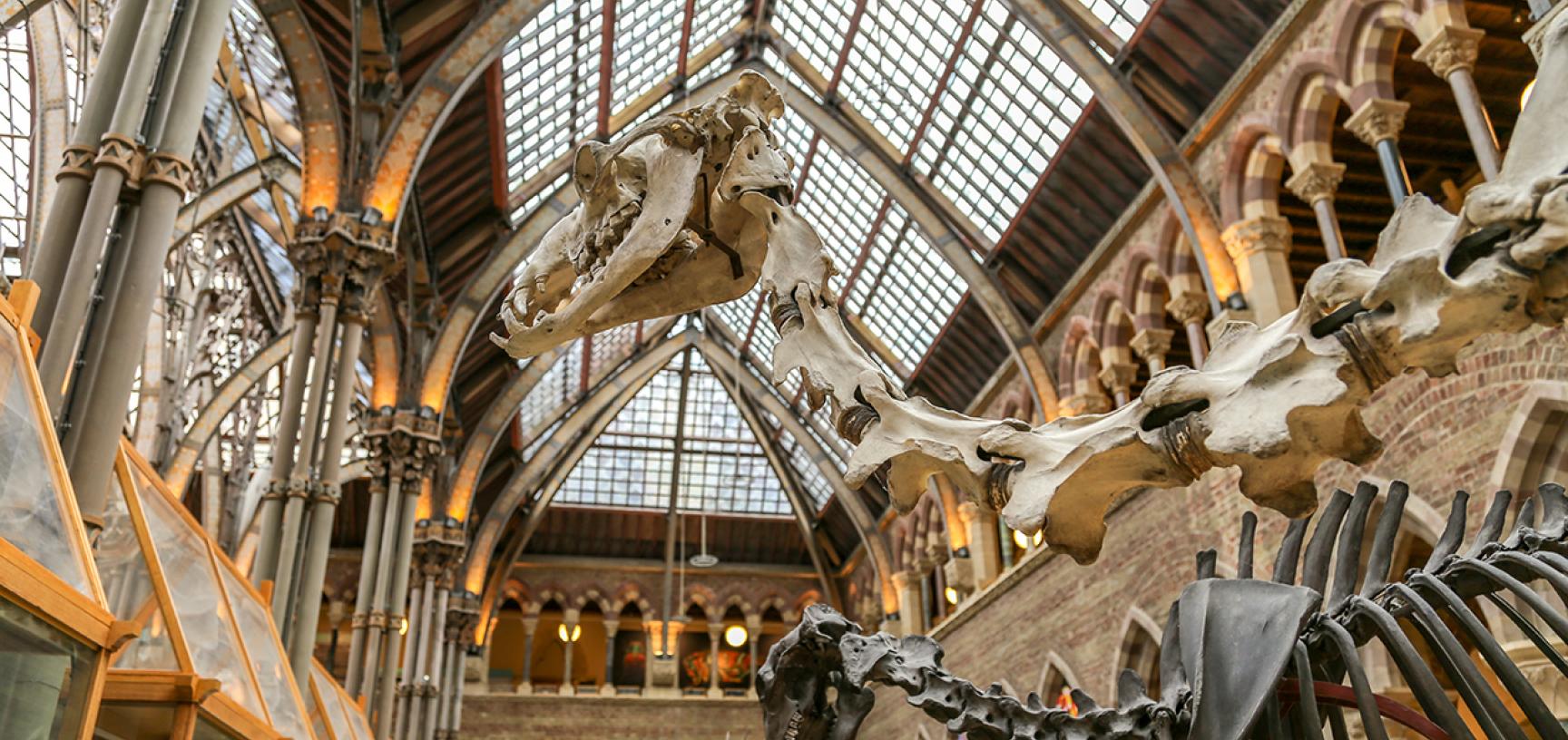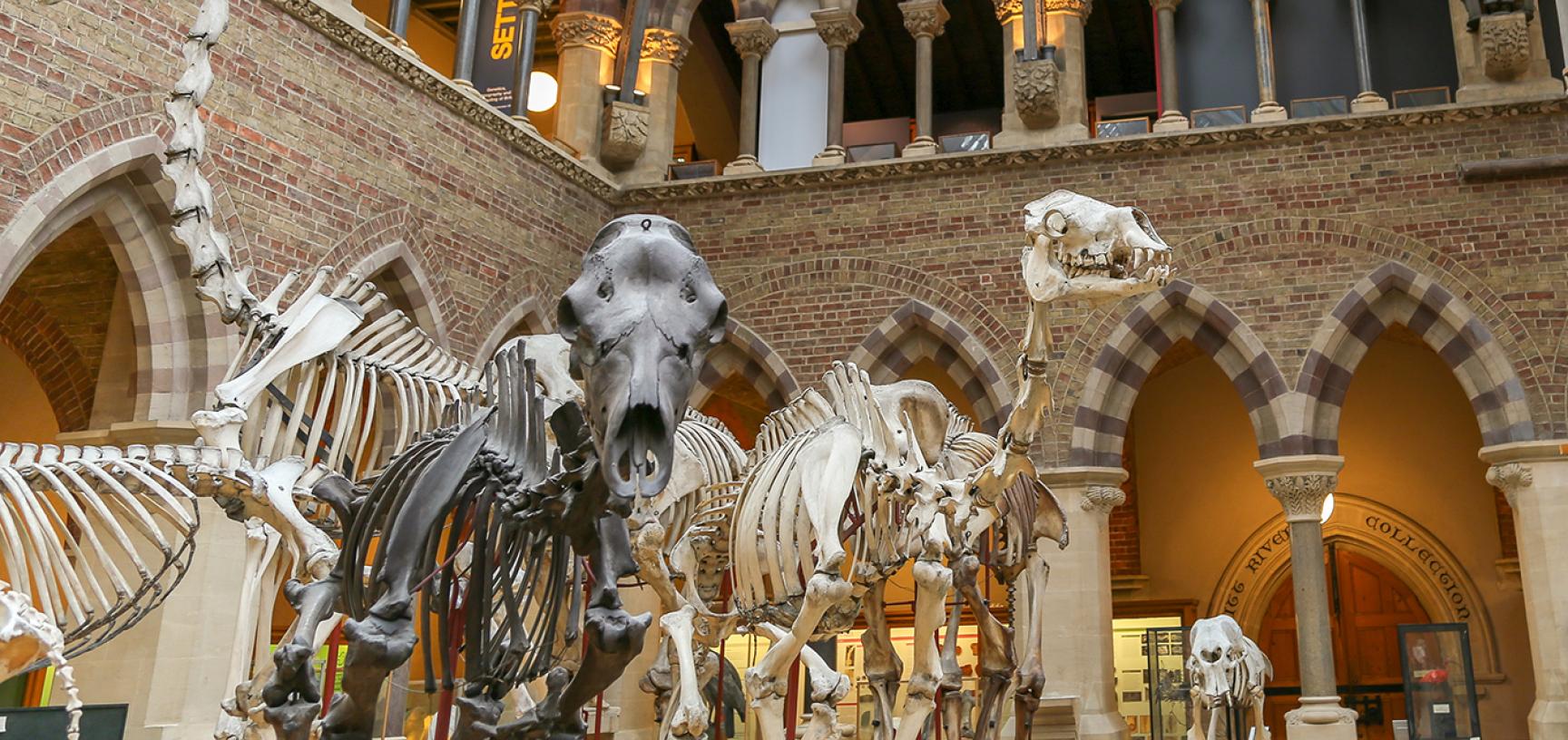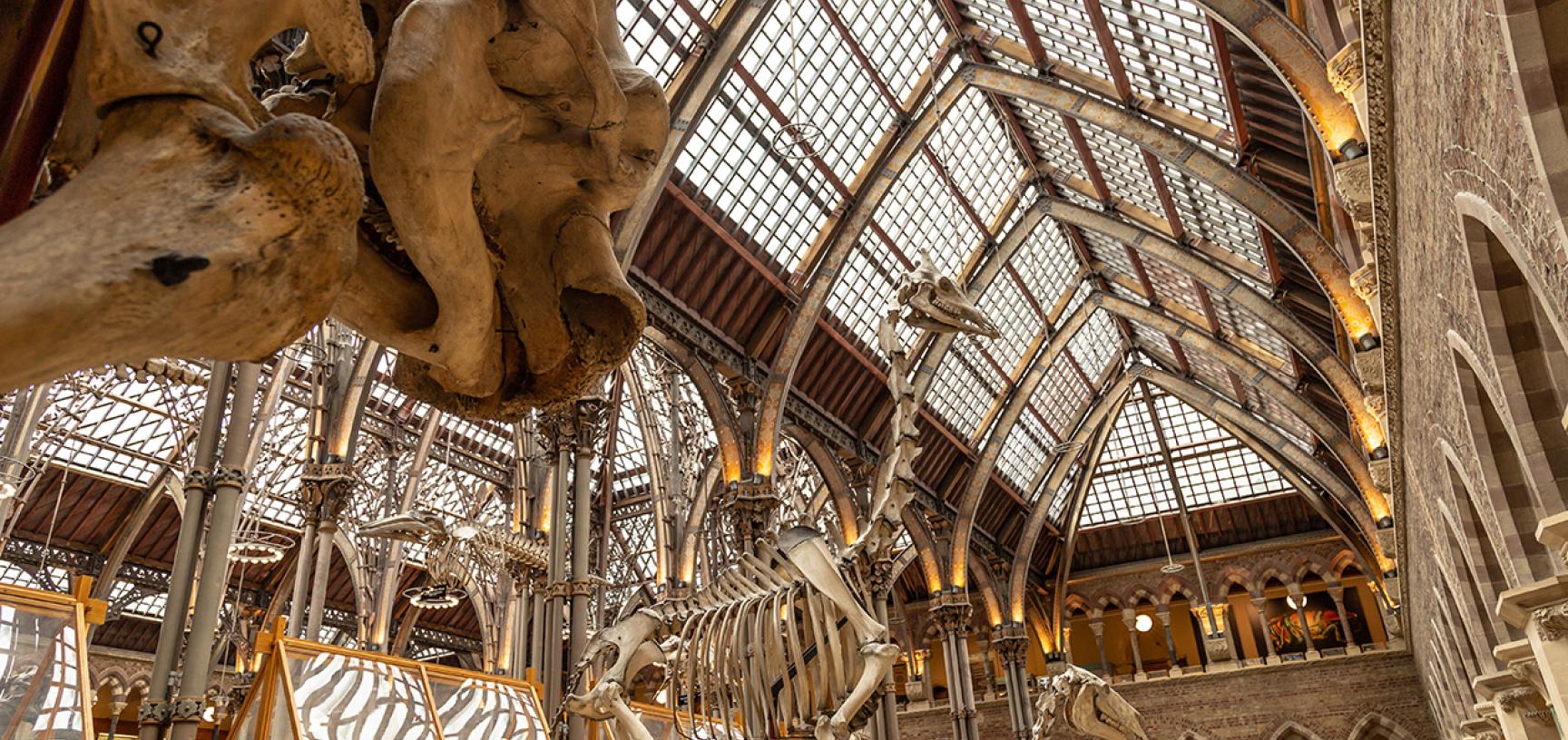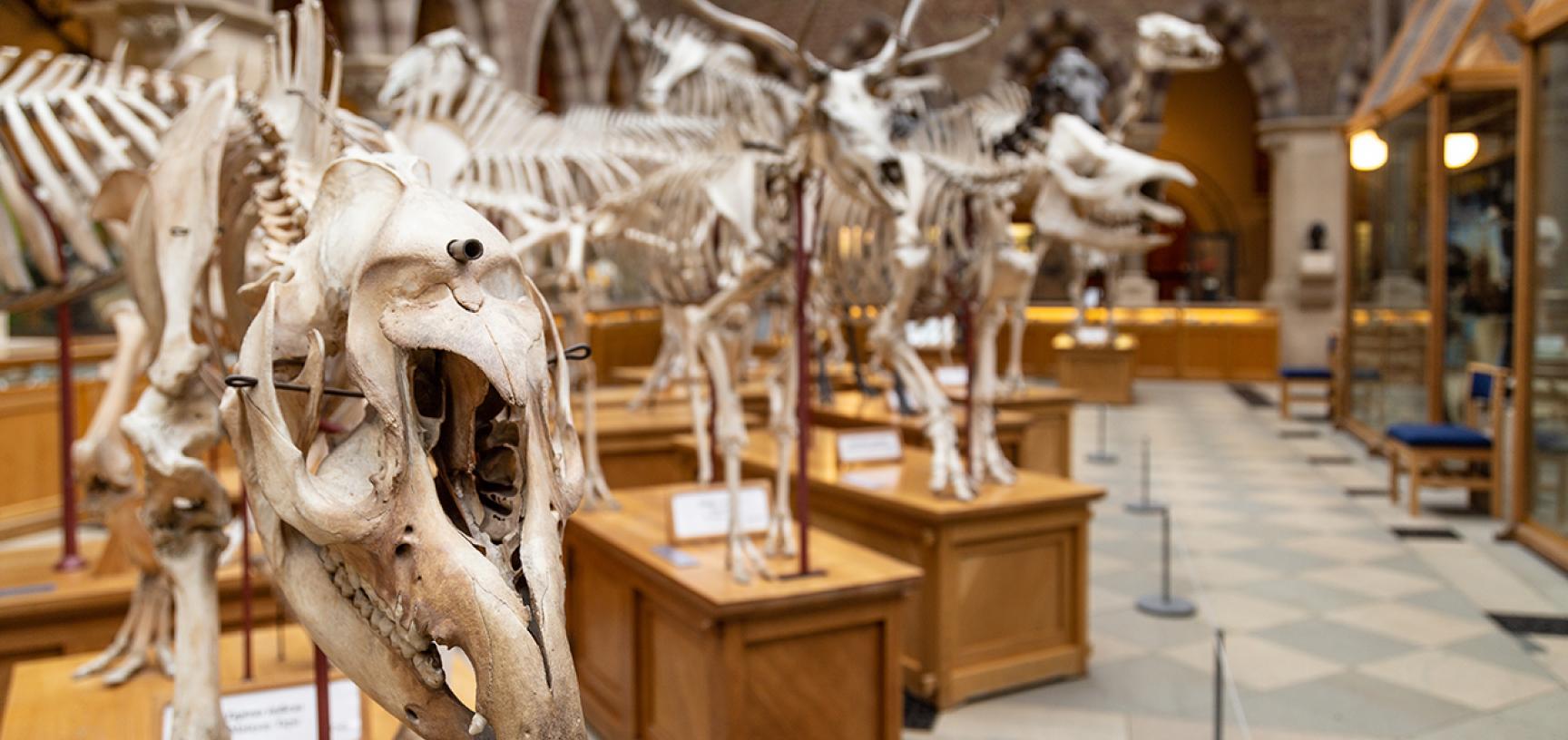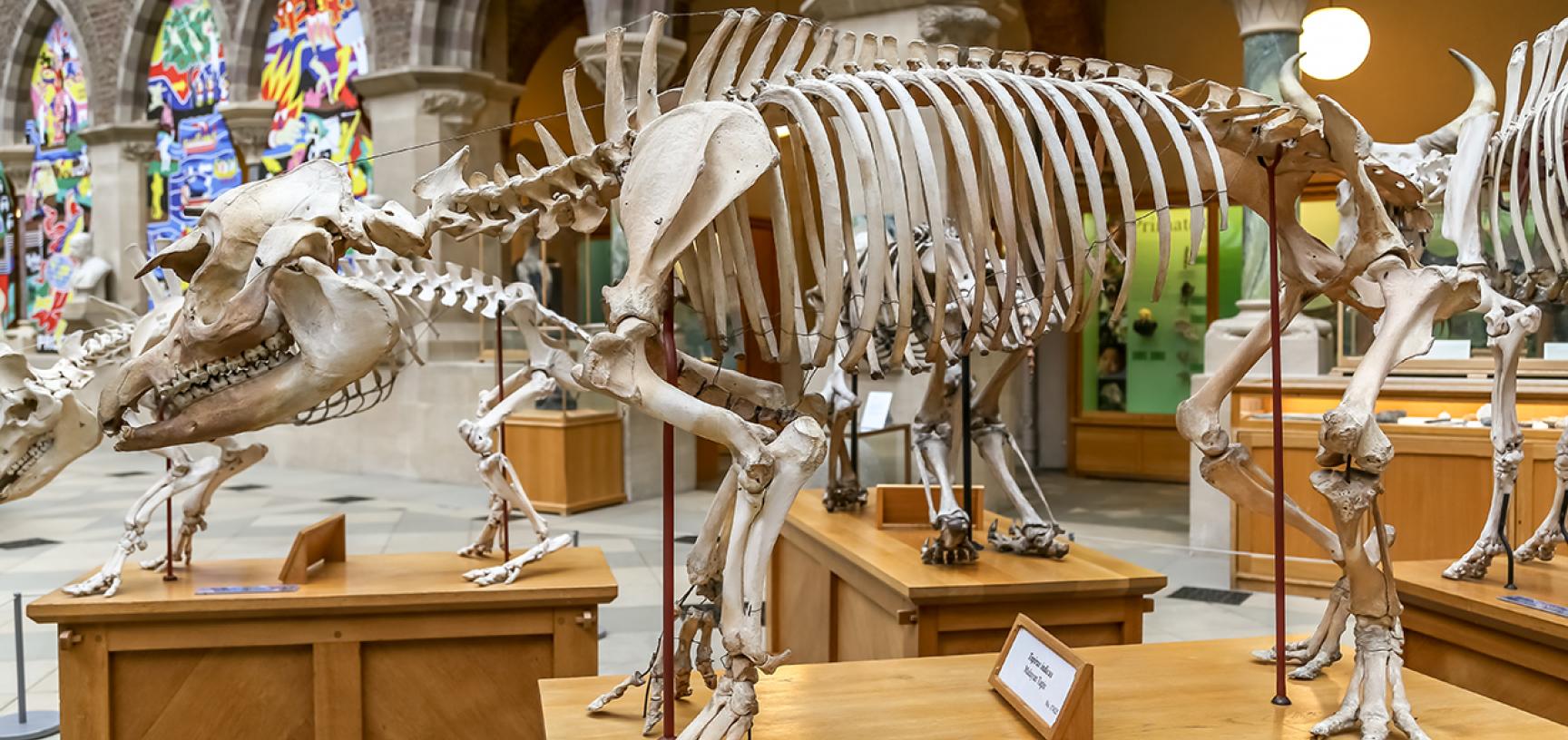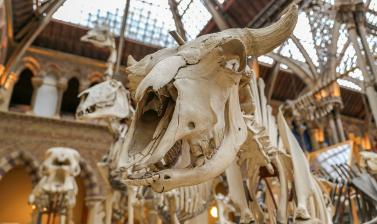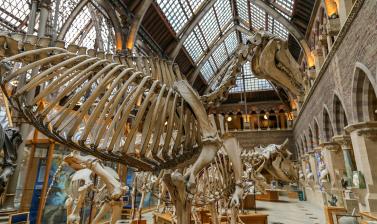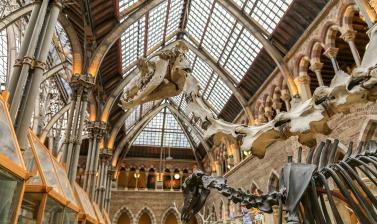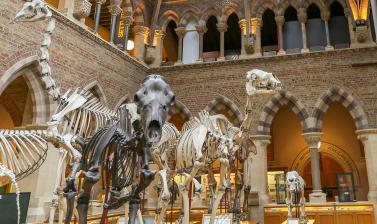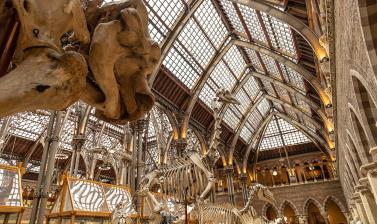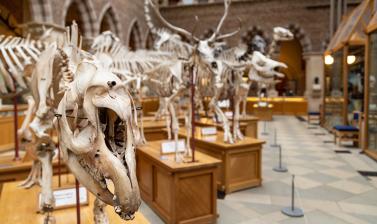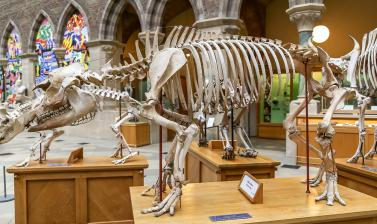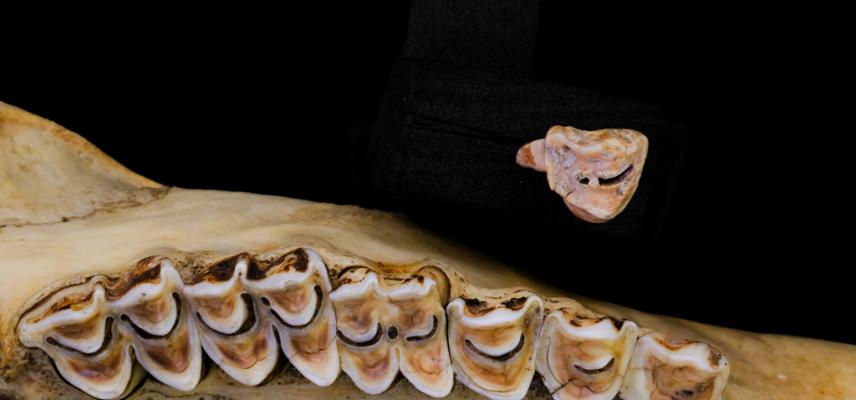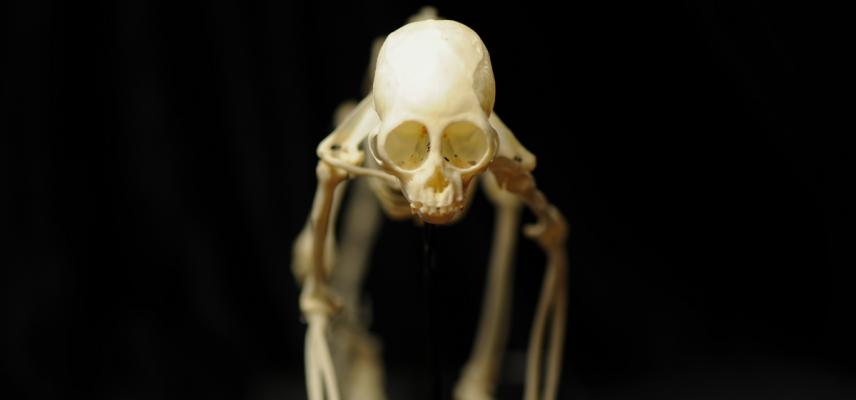Skeleton parade
The parade of skeletons in the main court is one of the Museum’s most photogenic displays. Even just a quick glance at the line-up reveals some of the great diversity of evolutionary adaptations of these large mammals.
From the long neck of the giraffe to the robust but slender limbs of the horse, the parade of mammal skeletons provides a striking example of the similarities and differences found in four-legged hoofed animals.
The study of such differences in the bodies of related animals is called comparative anatomy; in the skeleton parade you can compare the different skulls, horns, antlers, teeth and limbs to see how evolution has shaped every part of the skeleton for speed, defence, hunting or feeding.
In the parade are a polar bear, pig, bull, red deer, bison, horse, giraffe, camel, rhinoceros, reindeer, tapir and the extinct Irish elk. Towering over the end of the parade, and dwarfing visitors, are the huge skeletons of Asian and African elephants.
Find out more
From the blog: Skeleton keys
From the blog: Skeleton keys
From the blog: Skeletons and bones



